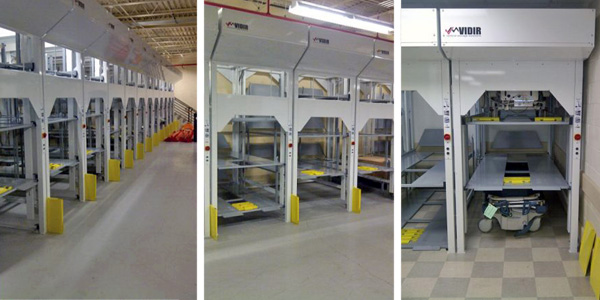Prior to calling on the A&D community, I called on healthcare and prided myself on being able to help solve virtually any storage issue within a facility. But there were always a few issues I didn’t quite know how to address. More than once, I have been lead through back halls and basements that were littered with hospital beds. As we breezed by, my contact would jokingly say, “Do you have a way to store all of these beds?” I’d laugh and cringe at the same time, “No, sorry we don’t.”
Hospital beds create some big problems for facilities. There are a lot of them, they require maintenance, there are many types of beds and they are expensive. Let’s take a closer look at some of these issues:
Hospitals have a lot of beds
Every facility is licensed for staffed beds and licensed beds. Staffed beds are beds that are physically available and for which there is staff available to attend to the patient who occupies the bed. Licensed beds are the maximum number of beds for which the hospital holds a license to operate. The actual number of beds a hospital has in the facility falls somewhere in between. In reality, many facilities house more beds at any given time than they have room for.
Hospital beds require maintenance
Hospital beds aren’t your typical mattress and box springs. They are high tech pieces of equipment that require maintenance. Either the hospital is responsible for the repair or the maintenance is outsourced. Either way, typically at least 10% of beds are out of service at any given time.
One size doesn’t fit all
Different services require different beds. Critical care beds are different from ICU beds that are different from maternity beds. The Med/Surg unit takes in all kinds of patients and often a new bed is brought in to meet specific patient needs. This means that the hospital has to store these specialty beds somewhere within the facility that allows for quick and easy access.
Hospital beds aren’t cheap
Better said, beds are expensive. Very expensive. They can range from $10,000 to upwards of even $50,000 for specialized beds. Not exactly an asset you want shoved up against walls and hidden around corners in the basement.
Until now, bed storage has been a messy business. Patterson Pope has heard the cries of the people and has found a solution. We are proud to announce The Bedlift, vertical hospital bed storage.
The Bedlift is a last in, first out vertical storage unit that stores up to five hospital beds in a footprint slightly larger than a single bed. The Bedlift can increase the maintenance department’s capacity and organization reducing the amount of time that beds are out of service. With the push of a button, the beds can be securely stored away – keeping them out of the hallways and corridors allowing them to be inventoried and quickly located when needed.
The Bedlift can be installed in under a day by our factory trained installation team, which means very little downtime during installation.
I’m proud to say that when you now ask a Patterson Pope rep, “Do you have a way to store all of these beds?”, the resounding answer is “Yes, we do!”
To learn more, please check out our Bedlifts information Page.











